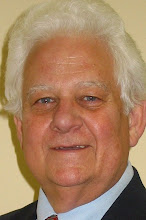
As I meet with independent hearing aid retailers across the country (13,000 strong), one “problem” that keeps coming up is the transition phase that takes place after the client has been fitted and is wearing hearing aids regularly.
“ My voice sounds funny.”
“It sounds tinny.”
“I hear feedback whenever it comes near my watch!”
Common complaints and just a few among the many you’ll hear from clients after they’ve made an expensive purchase. It’s important for the hearing aid dispenser to prepare the new hearing aid wearer for the new facts of life.
Early in the discovery phase of your discussions with clients, it’s important to prepare the client for the new reality. No hearing aid, regardless of price, truly replaces natural hearing, though some deliver a more natural listening experience, most often depending on number of channels which, in turn, translates into retail price.
Clients should have realistic expectations from the beginning and understand that a hearing aid is just that. It’s an aid, not a cure for hearing loss.
Before the purchase, I discuss the client’s priorities, which are pretty far-ranging. Most consumers are naturally concerned about price, and it’s at this point that I urge the buyer NOT to use cost as the number one factor in choosing hearing devices.
It’s here the education process begins. I discuss hearing comfort, wearing comfort, conveniences, organic sound options and, if the consumer is plugged into the grid, I introduce wireless connectivity. A short examination of lifestyle and the associate activities will better equip you to fit the right hearing device to the right consumer.
I had one client whose number one priority was to be able to hear his grandkids as they all swam in the pool. Made my job easy. I introduced him to several waterproof and water resistant hearing aid models. Problem solved. So, during this phase of the sale arc, educate the consumer on the various considerations other than price.
Guaranty Every Hearing Aid Your Store Sells
This is a win-win.
The client wins because s/he can be certain that if “this doesn’t sound right” no worries. A full refund is part of the arrangement, as it should be. Any qualified hearing aid practitioner wants a satisfied customer who enjoys a satisfying listening experience every day.
Thanks to you.
Tweaking
The new hearing aid wearer should expect some tweaking during the first few days and weeks, and this should simply be a part of your service offering. Tweaking channels to deliver a better listening experience is part of the transition process and your helpful understanding and knowledge to answer questions helps the client through this period of adaptation.
I ask my customers to keep notes for a day or two: too loud, too soft, feedback, echo – what’s going on in there and under what circumstances. And usually, after a visit or two, we strike that perfect balance of hearing ability and the most natural sound possible.
Go Proactive
When the customer leaves the store your job has just begun.
Follow up the next day with a telephone call to discuss any serious problems, discomfort or complaints. You can also be sure that the new hearing aid wearer will have a long list of questions so I usually grab a cup of coffee and settle in to listen and hear what my customers are saying. I’m the guide during this period of transition and I want to be there to help the client achieve the greatest improvement in hearing possible.
I also schedule an in-office adjustment within seven days of purchase. This allows me to adjust fit as well as tweak the channels according to the wearer’s list of problems.
Make the customer a stakeholder in his or her hearing by teaching these customers their roles in settings and maintenance.
And speaking of maintenance…
..a lesson in hearing aid maintenance will save service calls, it will save the client money in repairs and it’ll improve the customer’s daily listening experience.
Provide a cleaning kit and demonstrate how to clean a hearing aid and how to perform a battery swap out. Today’s battery packaging has made the process nearly mistakes proof, though I often hear stories of “watching the last battery slide down the bathroom sink drain.” Be prepared. Always carry a spare.
Over time, clients adjust to their new hearing experience, in large measure, because of your preparation and guidance during the transition process.
It’s a benefit to each customer and it cuts down on the number of returns.
Win – win.
John M. Adams III
jma3@hearingtutor.com


















No comments:
Post a Comment